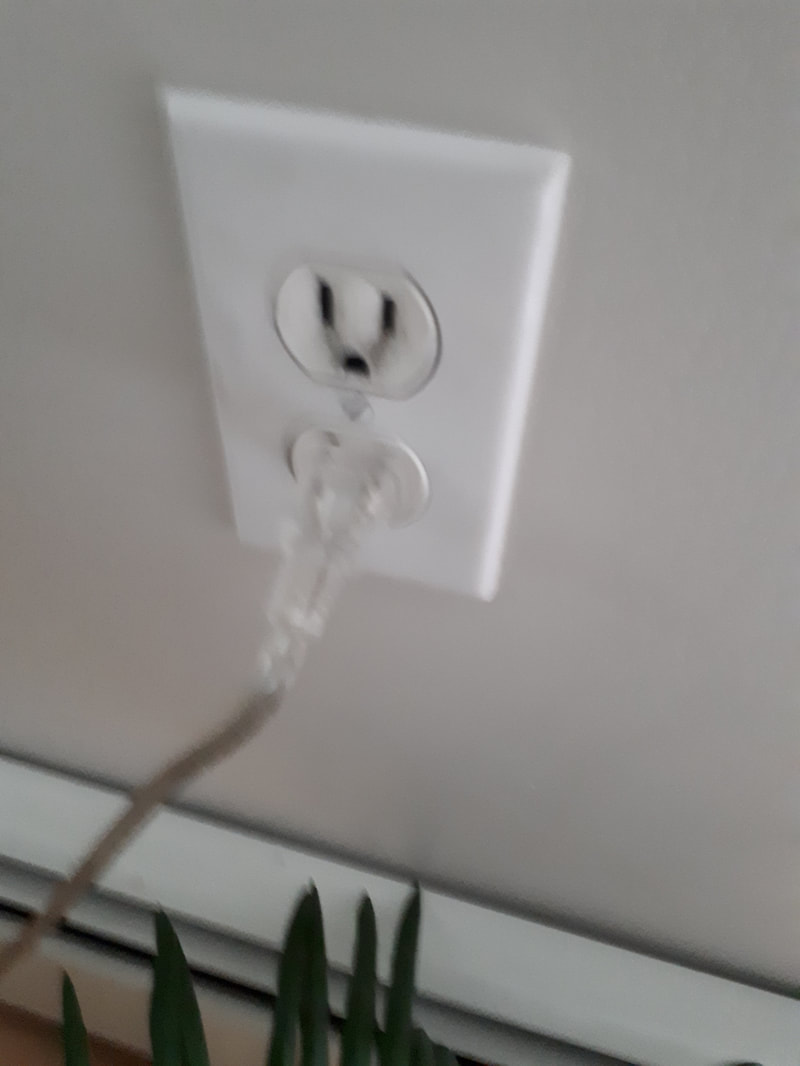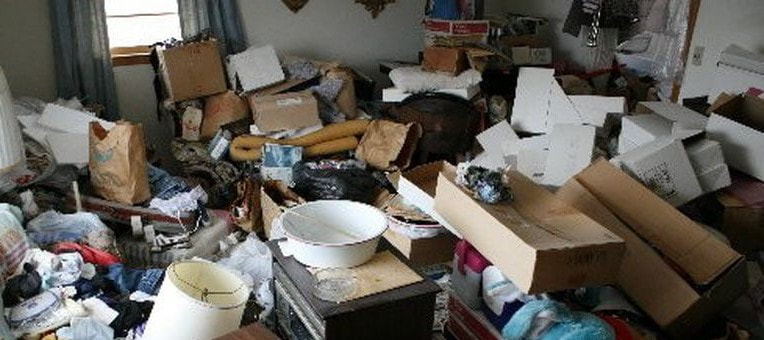Mike's Home Inspector BlogMichael Burfitt |
|
Five Golden Rings of Electrical Safety Electrical is probably the most important part of an inspection: while there is no doubt there is an issue when there is a waterfall in the kitchen or a large horizontal crack in the foundation, electrical issues can be difficult to detect by the untrained eye. Here are five that I always look for: Single strand aluminum branch circuits: Not all aluminum wiring is problematic; it's commonly used for electrical conduction due to its cost-effectiveness and lightweight nature. I also look for Knob & Tube (K&T) although it has largely been removed and replaced over the years. Inspection of Electrical Receptacles: Checking a representative sample for missing grounds, reverse polarity, and signs of arcing, such as burn marks. Reporting on the status of Ground Fault (GFCI) and Arc Fault (AFCI) Circuit interrupters: Building and Electrical Codes evolve; retroactive changes are rare. In spite of this, I always suggest updating electrical systems to the latest standards. Assessing DIY Modifications: Any signs of makeshift "improvements," like the use of extension cords for permanent power supply, are noted. System Overview: Assessing the entire system for adequate amperage, checking for undersized wires (oversizing is acceptable but wasteful), and ensuring no reasons exist for the power utility and insurance company to refuse service to the home. Six Geese-a-Laying Insulation Tips In older homes, insulation sometimes becomes an issue due to DIY attempts. While modern homes adhere to updated building codes, some retrofits fall short. For instance, in one inspection of an older brick house, the added insulation was carelessly installed, defeating its purpose. Remember, proper insulation traps air in pockets; compressing it renders it ineffective. Wet fiberglass insulation? Only fit for the trash. More insulation is beneficial, but not when compressed to squeeze more in. Seven Swans-a-Swimming in Plumbing
Plumbing installations by professionals are generally sound, but ongoing maintenance is crucial. Homeowners need to realize that sinks and drains aren't infinite voids. Disposing of inappropriate materials like baby wipes or bacon grease can lead to plumbing issues brewing for years, suddenly surfacing as household disasters. Eight Maids-a-Milking Moisture Concerns Moisture is the ultimate nemesis of homes, fostering rot, mould, and significant damage. The following proactive measures are key:
Stay tuned next week when we conclude this Christmas theme blog and look at four more inspection items. We are currently renovating one of our three bathrooms: we replaced the shower unit, redid the floors, painted the walls and the next step will be to replace the vanity and sinks. When the installers were putting in the new shower, it was observed that there was a rotted subfloor that needed to be replaced. Not a big surprise or expense, but something that should not be ignored. Today’s blog post is a spotlight on bathrooms and some of the things we home inspectors are looking for. Water Damage
I’ve said it many times but will repeat again that water is the #1 enemy of homes. Obviously, a bathroom is by design filled with water using fixtures that are valuable, provided they function as intended. I have identified many leaks during home inspections, but surprisingly the bathroom is rarely the cause. This is likely because most homeowners regularly visit the bathroom and can quickly identify and stop a leak. The two most common causes of water damage are:
GFCI Receptacles Ground-Fault Circuit Interrupters are critical safety features that can prevent death by electrocution (water and electricity don’t mix!). Electrical codes have expanded their use throughout the home but the first room they were required to be installed in was the bathroom. Not only do we always check that they are working properly, but they should also be tested monthly by the homeowner/tenant. Ventilation People are often surprised to learn that the kitchen doesn’t require ventilation, but the bathroom certainly does. A fan (or window) is required to remove the high amounts of moisture, especially after a shower otherwise mould and mildew can quickly take root. There is another type of ventilation we look for: waste pipe (DWV) ventilation. One of the clearest symptoms of inadequate DWV ventilation is gurgling toilets and we can advise further steps if this is detected during a home inspection. Shower/Flooring Tiles A home inspector is not an interior decorator and does not focus on cosmetic issues, but cracked flooring or shower tiles are not only ugly but can provide a means for water to flow where it should not be going. We also don’t comment on things like carpet, but an exception is made for both the bathroom and kitchen as neither should ever have carpeted floors. Improper Drainage While I offer and usually recommend a sewer scope inspection to my clients, they aren’t always necessary to detect problems. The biggest issue I see is slow draining sinks and toilets. If all the sinks and tubs in the home are slow to drain, it is likely a system wide problem that a scope can provide more information about. Luckily most drain issues are isolated to one specific sink or tub and it is often the result of hair that catches debris and while gross, is usually not difficult to clear. Be sure to regularly clean your drains to prevent this from happening. Contrary to certain TV shows, a bathroom leak is usually not detected from a waterfall in the floor below but is usually very slow and subtle. As a home inspector I use thermal imaging, moisture meters and of course good old-fashioned senses to help determine if a bathroom requires further attention from a plumber. Recently we have been doing a little spring cleaning in the summer and trying to do some organizing. I must admit I have a hard time letting go of items “just in case” although I certainly cannot be considered a hoarder in any way. There are several TV shows that cover the topic of hoarding and while they are informative, they tend to show the worst examples of a hoarding disorder.
What is Hoarding? The generally accepted definition of hoarding is someone who has “persistent difficulty with getting rid of possessions, especially with little or no value”. Like many other issues, it is not an all or nothing condition and various stages of hoarding exist. Generally, for a home inspector this means a hoarded home has items stored outside the normal expected areas in a house such as in stairways, in the middle of living room floors and an excessive amount on kitchen counters. The Main Problems with Hoarding The most obvious one to home inspectors is that an unusually large number of belongings in a home makes it difficult to do our jobs. We don’t have the ability to move a significant amount of homeowner belongings, and this can conceal signs of water damage or mold growth. The biggest concern however is safety. Hoarding and Emergencies When you think of emergencies, most people think of needing a clear path to escape in a fire or for paramedics to enter. Even with a path cleared that doesn’t mean that fire safety can be ignored. It takes very little time for toxic smoke to overwhelm someone, often in seconds rather than minutes. The more obstacles to walk around, the higher the chances of a tragic outcome. From a home inspection point of view, there is another potential emergency that few new homeowners think of: access to shut offs. All homes should have at least 2 and possibly 3 or more: they are usually located:
Burst plumbing in particular can do devastating amounts of damage in only a short period of time. Electrical arcs can cause fires if not immediately de-energized and electrocution can occur by touching even a single live wire if the electrical source is not stopped immediately. Some outlets in a home are protected by GFCI (Ground Fault Circuit Interrupters) but this is not universally required on all receptacles, particularly in older homes and, like an airbag or a seatbelt should not be 100% relied on to save your life. Too Many Things are a Liability, NOT an Asset Of course, many of us find that we have accumulated many more items in our house than we had when we moved in but it is vital that we regularly manage our clutter to keep it from impeding the safe function of our home. Too many assets can actually be a liability. Always keep things in designated storage spots so you will have access to everything necessary to maintain your home and be safe. Your local home inspectors and emergency responders thank you! There are two main types of safety devices that inspectors look for: Arc-Fault Circuit Interrupters (AFCIs) and Ground Fault Circuit Interrupters (GFCIs). Both provide different types of protection: the AFCI generally protects against fire and the GFCI against electrocution. Arc Fault Circuit Interrupters AFCIs work by continuously monitoring the electrical waveform and promptly interrupting the circuit if a wave pattern that is characteristic of a dangerous arc that can cause a fire. The best way to think about them is like they are small lightning bolts. Much like lightning, arcs create a large amount of heat that can ignite a fire behind the walls of a home. AFCIs can be found in both the receptacles on the wall and inside the electrical panel. They can usually be identified with either the term “AFCI” written on them or by a white curly wire in the panel. Starting in 2002, bedrooms were required to have AFCI protection, and it has been expanded multiple times to include most electrical circuits. There are several exceptions that any licensed electrical contractor is aware of (such as bathrooms), and I won’t bore you with quoting the long and confusing Canadian Electric Code. Bottom line is that AFCIs are expensive but serve a valuable role in preventing electrical fires.
Ground Fault Circuit Interrupters GFCIs can look very similar to AFCIs (and to make it more confusing it is possible to have GFCI AND AFCI protection in the same area) but serve a different purpose. A GFCI looks for differences in current between the hot and neutral conductors. What exactly does that mean? If the current in the neutral is lower than the hot, it means electricity is travelling where it should not be going. Often this means it is passing through a human body. A GFCI detects this almost instantly and stops the circuit, potentially saving a life. The language surrounding where GFCIs are required is confusing but the simplest way to look at it is that any electrical outlets within 5-6 feet of a water source need GFCI protection. Water and electricity do not mix, and the combination can be fatal without the safety of a GFCI. An Important Note Home inspectors are not electricians or code compliance officers. While I have a working knowledge of electrical codes, I do not cite current codes in my reports. There are two reasons for this:
In other words, if the home predated AFCI and GFCI requirements you do not have to add them to be code compliant unless you perform major renovations. Having said all that, my focus is on safety, and regardless of what the codebooks say dangerous electrical currents do not care when your home was built. Therefore, I always recommend upgrading your electrical system to the latest safety requirements for you and your family’s protection. These two devices serve different purposes, but both are valuable safety features that should not be ignored. |
Archives
July 2024
Categories
All
|
|
Inside Edge Home Inspections Ltd.
Halifax, NS 902-209-9921 [email protected] Proudly Serving the HRM & Central Nova Scotia |







 RSS Feed
RSS Feed

